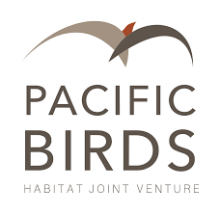
Conservationists protect and restore wetlands across the Pacific Americas Flyway
By Jessica Shea
Ducks Unlimited's C.K. Eidem grew up near the Puget Sound in Washington State. As a boy scout, he explored nature while hiking in the mountains. Eidem’s elementary school sat next to a nature preserve. He remembers going on a school outing to release salmon into the preserve’s stream. Decades later Eidem chaperoned the same salmon-releasing school trip with both his sons. With a career in conservation and a lifelong love of nature, Eidem works to conserve and restore wetlands in the Puget Sound ecoregion.
The landscapes of the Puget Sound ecoregion are diverse and dramatic. They vary from inland sea to tidal marshes to urban areas of Seattle to forest to agriculture, all crowned with snow-capped mountains in the distance. This juxtaposition of diverse habitats in close proximity leads to the diversity of wildlife.
The dozens of species of birds, including waterfowl, shorebirds, song birds, and birds of prey, inhabiting the region contribute to its beauty. The Puget Sound and its surrounding freshwater systems are especially important for migrating and wintering waterfowl of the Pacific Americas Flyway.
Important bird species in riparian habitats in the Puget Lowlands include Swainson’s thrush, yellow warbler, and great blue heron. In addition, more snow geese are coming to the area every year, and it was one of the first places in the lower 48 to see increased numbers of trumpeter swans after their decline in the U.S. The Puget Lowlands also has a large concentration of wintering bald eagles.
Ducks Unlimited and partners have been working on a variety of conservation and restoration projects in the North Puget Lowlands using funding from the North American Wetlands Conservation Act, says Eidem. To date, they have conserved 1,536 acres through project activities like restoring tidal marshes and controlling non-native plants, such as cattail. Tidal marshes are used by millions of migrating birds to breed, rest, refuel and overwinter.
Pacific Birds Habitat Joint Venture, a group of conservation partners in the Pacific Northwest, determines priority bird species based on the population trends of birds and the threats to their habitats. Farmland, including wetlands, is critical to many species of priority birds, like American wigeon and Northern Pintail ducks.
“Another aspect of our conservation work is what I call ‘farm plumbing,’” Eidem notes. “As farm infrastructure ages, farmers are repairing and improving drainage to make it possible to continue farming. If farmers provide drainage without water control, they chance losing the land’s wetland functions, which are important to wildlife and people. Ducks Unlimited’s projects help make the water level more reliable for the farmer and the birds by making farms behave more like wetlands in the non-growing season and drain better when it’s necessary for agriculture.” In other words, projects are designed to get water to drain better in the spring for the farmers and hold water better in the winter for the birds, making agriculture and conservation compatible.
Many of the conservation projects in the North Puget Lowlands have benefitted from grants from the North American Wetlands Conservation Act (NAWCA), which has provided funding for wetland habitat preservation projects in the U.S., Canada, and Mexico since 1989. According to Eidem, Ducks Unlimited works to obtain bird-centric funding, but the grant money also provides conservation for salmon, which is one of the priority species for Washington State.
Over the past 30 years, NAWCA has grown into one of the most significant conservation programs in history. More than 3,000 NAWCA-funded projects have conserved 30 million acres of wetlands and associated upland habitats. The projects span nearly every state, territory, and province in Canada, the U.S., and Mexico. The goal of the multi-billion dollar grant program is to guarantee waterfowl and other wetland-dependant species a diversity of habitats across the continent, from breeding to wintering grounds, in perpetuity.
NAWCA-funded projects across Canada, the U.S., and Mexico have improved birdwatching, hunting, fishing, and other outdoor recreation opportunities on public lands. Habitats conserved through NAWCA projects have far reaching impacts. For example, the conserved wetlands store water and recharge aquifers, which helps secure future water supplies. Healthy wetlands also improve water quality by removing phosphates, nitrogen, and pesticides. When wetlands are restored to their natural states, they help prevent soil erosion during floods.
“In the Pacific Northwest, I see wetlands and wetland conservation as an important part of adapting to changing rainfall and snowfall patterns due to climate change,” explains Eidem. One of the biggest challenges in the future could be sea level rise and the inundation of current habitats.
Conservation projects in the wetlands and estuaries and on the farms in the North Puget Lowlands will ensure a healthy ecosystem for the plants, animals, and people who live there.
